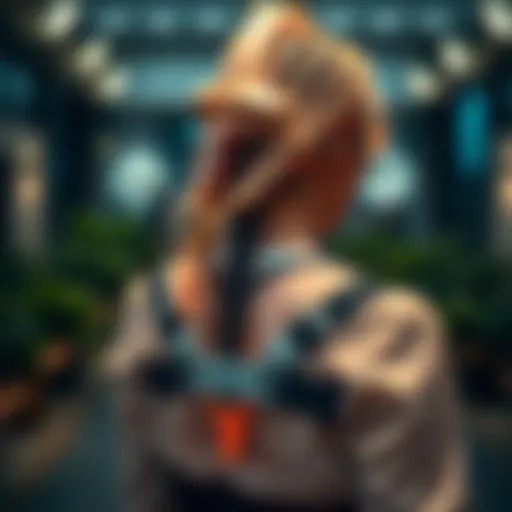The Philosophy of Kintsugi in Fashion and Textiles
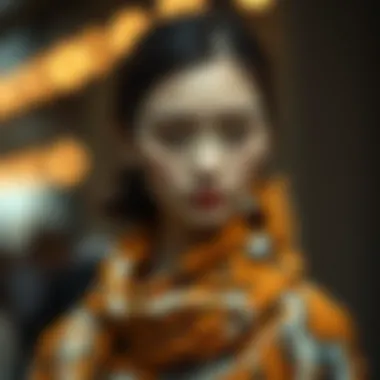

Intro
Kintsugi is more than just an artistic practice; it's a philosophy deeply ingrained in the Japanese culture, emphasizing the beauty of imperfection. This ancient technique of repairing broken pottery with lacquer and gold dust serves as a poignant metaphor for resilience and the art of embracing flaws in our lives, including our fashion choices. As we journey through this article, we'll uncover how the principles of Kintsugi can invigorate contemporary garment design and influence thoughtful consumer behavior.
Through the lens of Kintsugi, flaws transform into unique identifiers, urging us to rethink the narrative around our clothing and personal style. By valuing repair over replacement, we align with sustainability, advocating for a more conscientious fashion industry. The intertwined themes of resilience, beauty, and sustainability will guide us, allowing for insights that could reshape the way we view our wardrobes and ultimately, our identities.
Fabric Knowledge
In the context of Kintsugi, understanding fabrics becomes vital as we explore how different textiles can embody the philosophy of embracing imperfections. Just like the mended pottery, fabrics have their own stories—from the fibers that are woven together to the way they age with use.
Types of Fabrics
There’s a myriad of fabrics available today, each with its unique properties and characteristics, which can elevate our appreciation of clothing.
- Cotton: Known for its versatility and breathability, cotton often softens with wear, developing a lived-in feel that illustrates the Kintsugi concept of beauty in aging.
- Linen: This fabric’s natural wrinkles can often be seen as imperfections, yet they add to its character, making it a great choice for casual styles.
- Silk: While silk may seem delicate, its ability to hold onto color and elegance highlights the beauty that comes with time, reflecting the ethos of Kintsugi.
- Wool: The natural knots and variations in wool can symbolize the uniqueness of each thread, akin to the repair marks in Kintsugi.
How to Care for Different Fabrics
Taking care of fabrics is essential not just for longevity, but for appreciating their unique qualities. Here are some basic care tips:
- Cotton: Wash with cold water to maintain color, and consider air drying to prevent shrinkage.
- Linen: Hand wash or machine wash on a gentle cycle; ironing can enhance its chic, wrinkled appearance.
- Silk: Opt for a delicate cycle and avoid exposing it to direct sunlight to prevent fading.
- Wool: Hand wash in cold water with special wool detergent; reshaping while wet can help maintain its form.
By treating each fabric with care and understanding, much like the artisans who practice Kintsugi, we can elevate our wardrobe choices and appreciate the tales each piece tells.
"Every flaw tells a story, and every scratch holds a lesson."
As we move forward, we will delve deeper into how the philosophy of Kintsugi influences style tips and encourages mindful alignment between personal aesthetics and choices in textiles.
Preface to Kintsugi
Kintsugi, the Japanese art of repairing broken pottery with lacquer mixed with precious metals, carries more than just aesthetic appeal. It offers a profound philosophy that resonates deeply with the themes of resilience, acceptance, and beauty in imperfection. In a society often obsessed with perfection, Kintsugi stands as a gentle reminder that flaws and scars can hold the most richness. The art invites us to look at our broken pieces not as mere damage but as an intrinsic part of our journey, a valuable story etched in gold.
In this article, we'll embark on a comprehensive exploration of Kintsugi, bridging its historical roots with contemporary applications in fashion and textiles. By understanding the philosophy behind Kintsugi, we can grasp how its principles apply to personal style and broader sustainability discussions. It's crucial for fashion enthusiasts, stylists, and retailers alike to recognize these concepts, as they pave the way for new design philosophies that celebrate rather than conceal imperfections.
Adopting Kintsugi in fashion calls for a shift in perspective, focusing on the narratives that garments carry rather than their superficial nature. This embrace of imperfection can foster a more conscientious approach to clothing selection, encouraging us to value uniqueness and sustainability. As we dive deeper into the origins and underlying philosophy of this enchanting practice, we can begin to appreciate not only how it can influence fashion but also how it encourages a more comprehensive understanding of beauty.
Origins and History of Kintsugi
Kintsugi, which translates to “golden joinery,” traces back to the late 15th century in Japan when pottery was repaired using a lacquer technique. The origins are steeped in tales of wabi-sabi, a Japanese worldview that finds beauty in the transient and imperfect. Legend has it that a shogun, distressed by a cherished teacup's breakage, sought to have it repaired. When he received it back, the imperfect repair sparked inspiration, leading to the development of Kintsugi.
This art form utilizes natural materials like lacquer derived from the urushi tree, combined with powdered metals such as gold, silver, or platinum, which brings a striking contrast to the previously imperceptible fractures of the pottery. Kintsugi soon grew beyond mere aesthetics; it blossomed into a cultural practice that intertwined with the greater Japanese philosophy of finding meaning in adversity and change.
Throughout history, Kintsugi has been more than just an alternative repair method. It transformed pieces into unique artworks, each telling a personal narrative of resilience. The repaired ceramics became conversation starters, with invites to embrace one's journey, scars, and all. Thus, the historical journey of Kintsugi enriches not only the essence of the pieces restored but also the people who embrace its philosophy, giving it relevance in today’s rapidly evolving culture.
The Philosophy of Imperfection
At the heart of Kintsugi lies a profound acceptance of flaws — a philosophy that challenges modern standards of perfection. In a time when social media often bombards us with an idealized view of life, Kintsugi stands apart by celebrating the beauty of brokenness. It encourages individuals to recognize their imperfections as part of what makes them unique.
The philosophy of imperfection speaks to the core of human experience. Just as cracks in pottery reveal history and character, our own life challenges tell stories we might prefer to overlook. Embracing these experiences not only fosters self-acceptance but also allows for a deeper connection to others. Sharing stories of struggle can create bonds that superficial beauty cannot achieve.
In fashion, this philosophy parallels the rise of sustainability and conscious consumerism. Unconventional designs that showcase repairs or distressing capture the essence of Kintsugi. For instance, clothing brands are increasingly exploring “distressed fashion” that values authenticity over perfection, allowing consumers to express individuality while acknowledging their own narratives.
In essence, Kintsugi offers a counter-narrative to the obsession with flawlessness that pervades fashion and society. By accepting imperfections, we can enhance our personal styles while contributing to a broader cultural shift towards inclusivity and sustainability. The conversation around Kintsugi is not just about aesthetics; it encourages an evolved appreciation for all that is authentically us.
Symbolism in Kintsugi
The practice of Kintsugi transcends mere aesthetics; it encapsulates profound symbolism that resonates on multiple levels. At its core, Kintsugi teaches us that broken objects can be regarded not as worthless debris but as embodiments of resilience and acceptance. This perspective cuts through the superficial nature of contemporary fashion trends, prompting us to reconsider our relationship with flaws in both our belongings and ourselves.
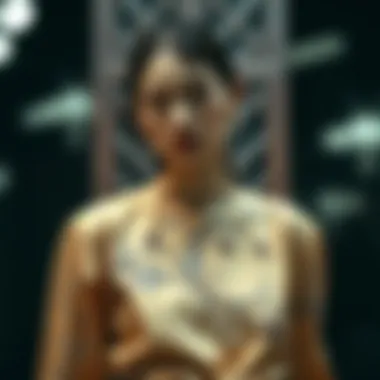

The beauty of Kintsugi lies in its ability to elevate imperfections, turning cracks into an art form rather than a sign of failure. The lacquer, often dotted with gold, symbolizes that which is valuable, suggesting that our vulnerabilities are not just there to be hidden, but can indeed be celebrated.
Benefits of Embracing Kintsugi:
- Enhances Self-Acceptance: Acknowledging imperfections fosters a more profound understanding of self-worth.
- Cultivates Mindfulness: Reflecting on the process of repair encourages a slower approach to consumption, aligning with the notion of sustainability.
- Promotes Unique Expression: Each repaired piece tells its own story, reflecting individuality in a world that often promotes conformity.
By embracing these symbols inherent in Kintsugi, we welcome a far more nuanced view of beauty into our lives—one that recognizes that the things we consider flaws can actually contribute to our overall allure.
Beauty in Brokenness
The phrase "beauty in brokenness" captures the essence of Kintsugi perfectly. Instead of discarding a broken item, this art form reminds us to cherish the memory of its usage and the journey it has taken. Each fracture tells a story, and instead of being hidden away, these narratives are made visible through the delicate gold seams that bring the piece back together.
In the world of fashion, this approach can be applied to garments that have been worn, torn, or stained. Imagine a pair of jeans that have seen the vibrant streets of Tokyo, each tear rousing curiosity in those who notice them, rather than a detraction from its worth. The choice of leaving such marks visible, rather than opting for pristine, untouched perfection, reflects an attitude toward life itself—that it is the experiences that shape us, not the superficial layers we wear.
Resilience and Healing
Resilience stands tall as one of the most significant themes presented through Kintsugi. Life is inherently tumultuous; it tests us, and through it, we often break. However, like the broken pieces of pottery remade, there exists an opportunity for healing. Kintsugi symbolizes this journey of reclaiming strength and beauty from adversity. By repairing what we perceive as broken, we not only revive the object but also breathe life back into the very notion of resilience itself.
The healing process is not just physical but deeply emotional. As we immerse ourselves in the act of taking time to repair, we reflect on our past experiences, deal with emotions tied to those memories, and in turn, manifest our growth. Each gold line serves as a reminder not of what we lost, but of what we have gained—a metamorphosis that is equally applicable to our garments and to us.
In sum, Kintsugi serves as a potent metaphor for resilience and recovery. It thrusts us into a world where brokenness holds significance and encourages a shift in how we perceive our flaws. This shift invites a broader dialogue about our choices in fashion, ethics, and personal narratives, ultimately paving the way for a more compassionate view of both our possessions and ourselves.
Kintsugi Techniques in Craft
The art of Kintsugi transcends the mere act of repair; it intertwines craftsmanship with philosophy in a dance of grace and meaning. Engaging in Kintsugi techniques is about more than just repairing broken pottery; it's a tangible representation of the beauty found in flaws and imperfections. As we explore the intricacies of Kintsugi craftsmanship, it's crucial to understand the specific materials, the delicate repairing process, and the various skill levels involved. This provides a comprehensive perspective on how Kintsugi’s principles can be adapted to the world of fabric and fashion.
Materials Used
The materials employed in Kintsugi are paramount to achieving that distinctive blend of art and repair. Most notably, the adhesive is a lacquer, often a natural one, that brings both functionality and beauty to the piece. This lacquer is typically combined with powdered gold, silver, or platinum, which not only enhances the visual allure of the repaired item but also symbolizes the value of the imperfections.
- Lacquer: Natural urushi lacquer is favored due to its longevity and the depth it adds to the finish.
- Powdered Metals: Gold is most commonly used, but silver and platinum offer a different take, each contributing unique aesthetics.
- Wooden Brushes: These are employed for application, aiding fine detailing in the repair.
- Cotton Cloth or Silk Rags: For cleaning up excess lacquer, a gentle touch does wonders.
By understanding these materials, one can appreciate the patience needed in selecting just the right elements to restore a cup or plate – the same care could be translated into fashion, emphasizing quality and durability in repairs.
Repairing Process
The repairing process in Kintsugi is an artform requiring meticulous care and concentration. It’s not merely about gluing pieces back together, but about reconceptualizing the object:
- Cleaning: Begin by thoroughly cleaning the broken pieces to ensure there’s no dust or grease that might hinder the adhesive’s effectiveness.
- Preparing the Lacquer: Mix the lacquer with the powdered gold or any other chosen metal. This step is quite essential as it lays the groundwork for the distinctive veins that will emerge.
- Applying the Adhesive: Employ a fine brush to apply the lacquer on the break lines. It’s advisable to work patiently, ensuring an even layer.
- Joining the Pieces: Carefully rejoin the segments, aligning them as seamlessly as possible. Here, it’s important to hold for a brief moment to ensure the bond begins to set.
- Finishing Touches: After the adhesive has cured, apply additional coats of lacquer where needed. This can enhance the gleam of the gold and help protect the repair.
At each stage, crafters are reminded that the journey of Kintsugi is not just about the end result but appreciating the process, a philosophy that can resonate in the echo of fashion and fabric.
"Kintsugi embraces the flaws and scars of objects to forge lasting beauty through time."
Skill Levels: An Overview
Kintsugi is accessible to many, spanning a range of skill levels. Beginners can dip their toes into basic repairs, while seasoned artisans can elevate their craft to artwork. Here’s a brief overview:
- Novice: Those just starting might focus on simple household items, learning the basic techniques without overthinking.
- Intermediate: As confidence builds, repairers can tackle more intricate designs or larger objects, experimenting with different metals or techniques.
- Advanced: Seasoned practitioners delve into creating bespoke pieces, producing art where the repairs are celebrated rather than hidden.
It’s clearfrom this spectrum that Kintsugi can be adapted to anyone’s skillset. For fashion enthusiasts, the parallels might draw from mending torn clothing or upcycling materials, thus extending the life of garments while embracing individuality.
Combining the elements of quality materials, a careful repairing process, and various levels of skill forms the backbone of Kintsugi. For those in fashion and textiles, adopting these techniques translates beautifully into a philosophy that echoes resilience, sustainability, and deep appreciation for every flaw.
Kintsugi's Influence on Fashion
The principles of Kintsugi have begun to ripple through the fashion industry, leaving a significant mark on both design philosophy and consumer behavior. The art of repairing while celebrating flaws reflects a shifting mindset about value and aesthetic in clothing, influencing how we approach the creation and consumption of fashion. This is not just a trend—it embodies a deeper understanding of individuality and authenticity that is becoming essential in modern style.
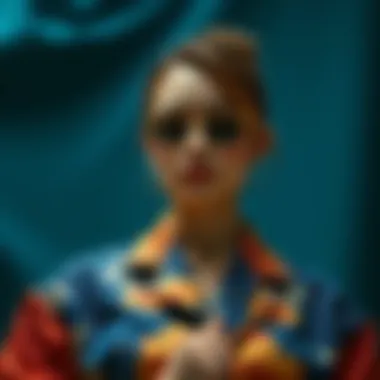

Incorporation of Repairs in Clothing Design
In recent years, more designers are taking cues from Kintsugi, integrating the concept of repair into their clothing lines. This can take forms such as visible mending, where stitches and patches are made to show expertise and creativity, rather than disguising imperfections. For instance, brands like Eileen Fisher and Patagonia champion the idea of visible restoration, demonstrating how a garment's history and wear can add character and tell a unique story.
When incorporating repairs into design, several factors become vital:
- Sustainability: Repairing clothes reduces waste and encourages consumers to keep their garments longer.
- Artistic expression: Each repair is unique, allowing designers to infuse personal and cultural narratives into their work.
- Market differentiation: In an era of fast fashion, standout designs that celebrate imperfections help brands forge distinctive identities within a crowded marketplace.
These principles resonate quickly with consumers who are tired of cookie-cutter products. Instead, they are drawn to pieces that reflect their personal journeys, notably resonating with the ethos behind Kintsugi, which invites individuals to embrace both strength and fragility.
Market Trends: The Value of Distressed Fashion
As we explore the market's landscape, it's clear that flawed garments are now not just accepted but are sought after. The rise of distressed fashion indicates that consumers are increasingly valuing uniqueness over the pristine. The notion of imperfection being beautiful has taken root in collections and boutiques all over the world.
Key trends in distressed fashion include:
- Denim: Distressed jeans, characterized by rips and fraying, have solidified their place in mainstream fashion, encapsulating the wear-and-tear philosophy.
- Pre-owned and Vintage: The surge in thrift shopping reflects a preference for garments that come with a story. Brands like ThredUp and Depop thrive under the premise that every mark tells a tale.
- Customizable Clothing: Retailers are tapping into the potential for customization, with consumers encouraged to add their style through patches and embroidery, blending Kintsugi's philosophy directly into the fabric of fashion.
"In Kintsugi, we see that every crack can become a defining feature instead of a flaw. This mirrors the evolving fashion landscape where distress is not just a style but a statement against fast fashion and overconsumption."
Ultimately, as Kintsugi’s ideals permeate more deeply into fashion, they reshape not just what we wear but also how we perceive value and beauty. Embracing flaws allows for a richer interaction with clothing, promoting a mindful approach to personal style that aligns with sustainability and individuality.
Consumer Behavior and Kintsugi
The exploration of consumer behavior in relation to Kintsugi is not just a passing trend. It dives deeply into how modern consumers are reshaping their relationship with fashion and fabric. In an age where mass production often disconnects buyers from the products they purchase, Kintsugi presents a refreshing narrative. The art of recognizing value in repaired goods speaks volumes about consumer priorities, concerns, and aspirations.
Kintsugi teaches that items carry stories, histories even, which can add depth to their value. This shift is not merely about aesthetics but signifies a broader acceptance of imperfections in our belongings, mirroring the imperfections within ourselves. It's not just broken pottery that gets a second chance; it's a call for all of us to appreciate the flawed but beautiful aspects of life.
Understanding Value in Uniqueness
With Kintsugi at the heart of the discussion, the perception of uniqueness in fashion has transformed dramatically. The idea of wearing something rare, something that tells a story, resonates strongly with consumers today. Objects repaired with Kintsugi techniques aren't just items of clothing; they are statements. Each stitch can evoke thoughts about resilience, individual journeys, and the courage to embrace one’s flaws.
When people make choices in their wardrobes, they often lean towards items that symbolize individuality. This means that the beauty seen in imperfections becomes a valuable asset in the competitive landscape of fashion. As a brand or designer, incorporating Kintsugi philosophy can breathe new life into collections, attracting a discerning audience that values authenticity.
- Uniqueness attracts attention. Just like a one-of-a-kind experience, a uniquely repaired item can ignite curiosity.
- Value over quantity. Many consumers are prioritizing quality items that last rather than transient fashion trends.
- Connection to stories. People are increasingly eager to know the backstories of their wardrobe choices—Kintsugi uniquely fulfills this need.
"In every break, there is a chance to create something more beautiful than before."
Embracing Flaws in Personal Style
When Kintsugi elevates the conversation about flaws, it's not just about accepting them—it’s about celebrating them. Individuals increasingly find self-acceptance through their clothing choices. This reflects a broader cultural trend where authenticity trumps perfection. The notion of ‘wearing your scars’ applies as much to garments as it does to personal identity.
Styles that draw attention to repairs or enhancements inspired by the Kintsugi ethos encourage people to embrace their quirks. A torn hem or a uniquely patched jacket can signal strength and authenticity rather than shame. This is fundamental in enriching personal narratives.
In practical terms, here are several ways consumers can embrace flaws in a stylish context:
- Mix and match pieces that otherwise wouldn’t pair well together. Make a fashion statement by showcasing your unique sense of style.
- Acknowledge uniqueness in flaws when selecting items. Scarfs with uneven patterns or jackets with distinctive mends reveal stories about taste and journey.
- Invest in Customizations. Seeking out designers who incorporate Kintsugi philosophy into their work ensures that each piece is a personal expression.
Fostering a culture that accepts imperfections can lead to more meaningful fashion choices. After all, clothing should resonate with a person's values, aspirations, and life experiences, all beautifully reflecting the art of Kintsugi.
Sustainability and Kintsugi
The interplay between sustainability and Kintsugi reflects a growing awareness in the fashion industry about the environmental impacts of clothing production and disposal. Kintsugi, while an aesthetic practice grounded in the philosophy of embracing flaws, also serves as an operational framework for sustainable fashion. By focusing on repair rather than replacement, this philosophy provides a foundation for reducing waste and fostering a mindful relationship with our garments.
One of the significant elements of sustainability in Kintsugi is the ethical imperative of repair. Instead of discarding broken items, the Kintsugi approach encourages individuals to mend and maintain their possessions, lending them a second life. In a world that often equates new with better, Kintsugi flips the script by celebrating the history and character of the worn. This challenge to consumer behavior is not just about saving a few bucks, but about making a proactive choice to engage with fashion that tells a story, often a more resonant one than something fresh from the store.
Ethics of Repair in Fashion
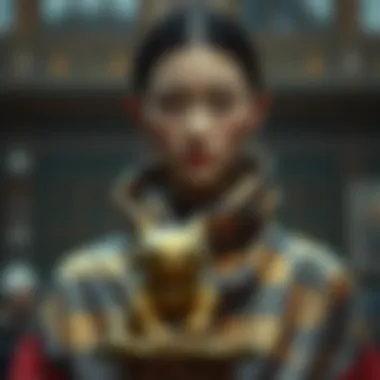

The ethics of repair in fashion aligns seamlessly with the principles of Kintsugi. When consumers adopt a mindset that values repair, they shift away from a throwaway culture. This cultural evolution spurs numerous advantages:
- Environmental Impact Reduction: Repairing clothing cuts down on waste, which largely fills landfills. By mending rather than discarding, resources consumed in the manufacturing process are conserved.
- Support for Local Artisans: Engaging in repairs often leads consumers to seek out local tailors or artists who can skillfully restore garments. This not only supports small businesses but also creates community ties, fostering a sense of local pride.
- Personal Growth and Skills Development: Learning how to repair clothing offers an opportunity for individuals to acquire practical skills. It encourages creativity and resourcefulness, reinforcing the idea that imperfections can lead to something unique.
"Mending is not merely about fixing something broken; it’s about viewing imperfections as integral to the life of an object."
Promoting Circular Fashion
Kintsugi exemplifies the heart of circular fashion, where the lifecycle of a product is extended. Circular fashion aims to minimize waste and keep materials in use for as long as possible. The connection between Kintsugi and circular practices can unfold in several forms:
- Redesigning Wardrobes: By introducing mended or upcycled garments into their wardrobes, fashion enthusiasts can lead by example, demonstrating the beauty of a well-loved piece. Their willingness to showcase these items inspires others to break free from the stigma of damaged goods.
- Community Workshops: Hosting workshops to educate others on Kintsugi techniques emphasizes a communal effort to repair and rethink fashion consumption. When people come together to learn and share, they enhance their connection to pieces they might otherwise overlook.
- Sustainable Brands Embracing Kintsugi: More brands are beginning to embrace the ethos of Kintsugi by integrating repair into their business models. Companies that offer repair services or create products designed with longevity in mind prioritize sustainability and quality over fast fashion’s fleeting trends.
By aligning Kintsugi with sustainability, we move beyond mere aesthetics. The philosophy encourages ethical consumption and a heightened sense of responsibility towards our choices in fashion. It reinforces the idea that every flaw tells a story, and through Kintsugi, those stories can continue, rather than end, with a simple break.
Practical Applications of Kintsugi in Clothing
The incorporation of Kintsugi into the realm of clothing is not merely an artistic choice; it is a profound statement on how we view materials and the value we place on them. This philosophy provides a pathway to redefine the standards of beauty within fashion. Today, where fast fashion dominates and garments are often discarded at the first sign of wear, Kintsugi invites us to transcend these superficial trends. It highlights the significance of durability and individuality in our wardrobe choices, encouraging a more conscious relationship with clothing.
Adopting Kintsugi principles goes beyond aesthetics. It embodies a mindset shift towards appreciating the story behind each garment, the memories tied to it, and the journey it has undergone. Understanding how to apply Kintsugi concepts practically can empower individuals to find new life in their clothing, moving away from a throwaway culture toward a more sustainable and meaningful approach.
DIY Repair Techniques
Embracing Kintsugi is akin to embarking on a creative venture that allows one to breathe new life into damaged clothing. DIY repair techniques harness the essence of Kintsugi, transforming flaws into eye-catching features. Several approaches can be employed:
- Visible Mending: This technique highlights repairs rather than hiding them. By using contrasting threads or patches, the repair becomes a part of the garment’s narrative. For example, a torn pair of jeans can be adorned with colorful patches, making it markedly unique.
- Fabric Darning: Darning involves weaving yarn into the fabric to repair holes or tears. This method can lend a vintage vibe, integrating texture and depth while preserving the garment’s integrity.
- Appliqué Techniques: Adding extra fabric pieces to cover holes or damaged areas can create visually stunning results. This method not only repairs but also beautifies the garment significantly.
- Painted or Printed Designs: Some may even choose to apply fabric paint or to print designs over damaged sections, showcasing the artistry of imperfections.
Each of these methods not only celebrates the repair process but also conveys a personal touch to clothing, fostering a deeper connection between the wearer and their garments.
Incorporating Kintsugi Philosophy in Wardrobe Choices
Integrating Kintsugi philosophy into wardrobe choices involves a shift in perspective towards clothing. It’s about valuing garments not just for their newness but for the stories they carry, including their flaws. This can be approached in several ways:
- Curated Collection: Build a wardrobe that embraces diversity in styles, textures, and ages. Vintage pieces often tell rich stories and add character, resonating with the Kintsugi philosophy.
- Investment in Timeless Pieces: Rather than purchasing transient fashion items, consider investing in high-quality pieces that can withstand wear and tear. When these garments do age, their history becomes part of their charm.
- Commitment to Repair: Adopt a mindset where repair is prioritized over replacement. Not only does this practice align with Kintsugi’s principles, but it also fosters sustainability in fashion.
- Quality Over Quantity: Follow the ‘less is more’ mantra. Curating a smaller wardrobe composed of well-loved and well-made pieces allows for greater appreciation of each item, inherently reflecting the Kintsugi philosophy.
"Each crack and seam tells a story; embrace them with pride rather than shame."
The practical applications of Kintsugi in clothing ultimately challenge conventional notions of beauty and perfection. As we learn to recognize the elegance in imperfection, we cultivate a deeper appreciation for our garments, shaping a more sustainable and thoughtful fashion landscape.
Closure: The Lasting Impact of Kintsugi
Kintsugi embodies more than the art of repairing broken pottery; it represents a profound philosophy that resonates deeply in today's society. As we peel back the layers of this ancient practice, we unearth lessons pertinent to self-acceptance and authenticity, especially in realms such as fashion and personal identity. The lasting impact of Kintsugi can be seen in how it challenges conventional notions of perfection and beauty, prompting us to cherish imperfections rather than hide them away.
The philosophy of Kintsugi invites individuals to embrace their own cracks, both figuratively and literally. It sheds light on the idea that every flaw or imperfection tells a story, contributing to the rich tapestry of a person's experience.
From a fashion perspective, Kintsugi encourages designers and consumers alike to value what is unique. Garments marked by wear, tear, or even intentional distress often attract attention and admiration. It's all about perspective—what once was seen as blemished is now perceived as distinctive and valuable. This shift has implications on market trends, encouraging a movement toward more sustainable practices where repair and reuse take the spotlight.
Moreover, Kintsugi is about the process as much as the result. The act of repair fosters a connection with the material, encouraging a more mindful approach to what we wear and how we engage with fashion. In today’s world, where fast fashion dominates and trends shift in the blink of an eye, embracing Kintsugi's teachings is a revolutionary act of defiance against disposable culture.
Reflections on Kintsugi Art in Modern Society
In contemporary culture, Kintsugi has emerged as more than an art form; it serves as a reflection of our collective experiences in a fast-paced world that often values superficial perfection over genuine expressions of self. This philosophy strikes a chord with those who, grappling with an often unforgiving social media landscape, find solace in the idea that it is perfectly okay to show our cracks and scars. The resurgence of interest in Kintsugi is evident in various manifestations, from artworks to home décor, as well as discussions around mental health and personal journeys.
On the societal front, Kintsugi encourages dialogue about acceptance, pushing back against the stigmas surrounding flaws and vulnerabilities. It has become a rallying call for movements that emphasize authenticity, whether it’s in body positivity, mental health advocacy, or sustainable fashion. This is a celebration of the whole self—broken, repaired, and made beautiful again. Through art installations, community workshops, and fashion initiatives, Kintsugi is encouraging individuals to engage with their imperfections and thereby foster connections based on shared experiences.
Future of Kintsugi in Fashion and Fabric
Looking ahead, Kintsugi is poised to have a significant impact on the future of fashion and fabric. As more designers gravitate toward sustainability and originality, integrating Kintsugi principles into their work aligns seamlessly with emerging consumer trends focused on authenticity and inclusion. No longer are we merely consumers; we are storytellers, and our clothing choices reflect our journey.
Moreover, technological advancements, such as the integration of 3D printing and textile recycling, provide exciting opportunities for the Kintsugi philosophy to flourish. Designers can explore innovative materials that echo the same values of repair and transformation.
These shifts also encourage consumers to rethink what they have in their closets. Instead of discarding damaged items, individuals are empowered to repair, personalize, and redefine their wardrobe based on a deep-seated appreciation for the narrative each piece carries. The concept of luxury may evolve from pristine new garments to those that display history and character.
Ultimately, the future of Kintsugi in fashion and fabric, while uncertain, seems promising. It carries the potential to redefine value, focus on sustainable practice, and encourage personal expression in an increasingly tailored world. As we embrace Kintsugi’s storytelling potential, its legacy in contemporary fashion is not merely one of aesthetic appeal but a broader celebration of life’s imperfections.



